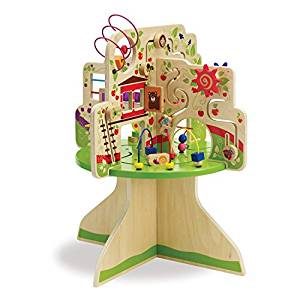Updated September, 2021
Have you ever heard the term “sleeping like a baby”? If so, you should know it is a very weird phrase, as baby sleep is inconsistent, fussy, and a little gassy. A terrible way to sleep! In the first year of your child’s life expect to put a lot of effort into teaching them how to sleep through the night. Be sure that some investment now will make a world of difference. This post is to help you learn what to expect and how to start preparing for healthy sleep now.
What to Expect
This blog is specifically about newborn sleep. This means your child’s expected sleep from birth to about 6 weeks of age. To start, you want to be sure that your expectations are realistic and developmentally appropriate.
Your infant is going to sleep on and off during the day, taking approximately 4-8 naps which could range anywhere from 15 minutes to 4 hours. Your doctor will tell you the maximum amount of time you should let your child sleep at once. For those heavy sleepers, it may be important to wake them for feedings.
Between naps, your baby could be awake anywhere from 45 minutes to an hour. In total, your new baby will sleep an average of 15 hours in a day. That’s a lot of sleep!
Sleep Training as defined by me
Now I personally use the term ‘Sleep Training’ to describe working with your child in any form to help them learn healthy sleep hygiene. Ultimately, this will look like them sleeping through the night without problem. To be very clear, Sleep Training, as defined by me, is NOT the cry it out method.
Sleep training is about balancing appropriate developmental expectations with the needs of your child. It is about being responsive and supportive. Most of all, it is about helping you move towards a sleep routine that makes sense for you and your family.
Newborn Sleep Practices
In these first few weeks, the best way to start moving towards healthy sleep for your newborn is to take the time to understand their cues. You want to start to learn exactly what your child looking tired looks like. Learn their signs, start moving them towards a schedule that makes sense for you, and whatever you do, try to avoid them becoming overtired.
Then find your patience. Remember that this is a brand new concept to your tiny human. So come up with a routine now, such as singing a specific set of songs before your evening sleep. And remember that you are practicing. You might be tired, so take naps with your child, and learn together.
Watch for Sleep Cues
Sleep cues are your baby’s way of communicating with you that they are tired and starting to wind down. These look different in every child, so your task these first weeks is to get to know your child and determine what these are. As they get older, their cues will become more obvious, such as eye rubbing and fussiness. But those cues can come too late. I want you to work on learning the earliest cues, such as staring off into space, or refusing to engage with you. Sleep begets sleep, so you want to avoid your baby getting overtired.
Practice Night and Day
When your child is first born, they don’t have any sense of night and day. They have to learn that they sleep at night and will want to be awake during the day. I believe this is one of the most important first steps you can take.
From day one, at night, keep lights low or off completely. Keep talking to a minimum. Don’t engage or rial them up when they awaken at 2am. Do your best to change diapers, feed, and put back to sleep. This won’t always be smooth or easy, but the sooner you can practice this, the easier the transition will be when they are developmentally ready.
Practice Independent Sleeping
Regardless of what your sleeping arrangements are going to be, try to have your little one practice independent sleeping throughout the day. Nap time is a great time to practice. Put your little one down once they fall asleep. Not ready for them to be asleep in the other room? Find a safe place, such as the floor with a rug on it, and have them sleep alone but in the same room as you. One of my favorites was to sit on the couch and do work while they were next to me on the next cushion over. Again, nearby, but independent.
Decide on Sleep Arrangements Now
Talk with your partner in advance for what you want your family’s sleeping arrangements to be. Do you want to co-sleep, sleep with baby in the room but separate, baby sleep in their own room. Now mind you, I think this may change, and I think flexibility is important, but it’s important to discuss together what type of sleeping arrangement you want. I’m not going to get into safe sleep practices here, but look them up if you have concerns.
If you decide to co-sleep, know that you need to continue to pay attention to your child’s sleep habits. I originally co-slept with both of my kids, but around 2-3 months they both started demonstrating that they would sleep better without me because they were waking themselves up to nurse when they didn’t need to. Even though I had really wanted to co-sleep, I made the decision to move them out of my bed for their sake and they slept better for it.
Habits to Avoid
The best way to break bad habits in the future is to not start them in the first place. So if you know you don’t want to co-sleep, don’t sneak baby into bed on occasion. Habits can and will form if you are not careful.
Avoid holding baby all the time while they are sleeping. I know your little one drifting off to sleep and then being asleep is amazing and special. However, you can’t always hold your child, so don’t get them used to this being the only way to sleep. Take the extra few minutes to move your child to somewhere safe to sleep, especially for naps during the day.
Along these lines, I want to mention quickly, in case I haven’t already, that silence is not your best friend, either for naps or overnight sleep. Silence is a foreign concept to your child and is not actually comforting. Plus, you don’t want to have to tip-toe around for the rest of your life. Especially during nap time go about your business as usual so your child can get used to everyday sounds, even when sleeping.
Sleep Schedule
In the newborn phase, I really do not have a solid sleep schedule to offer you. This phase is mostly about responding to baby’s cues and getting to know your human. Try to nap when they do and work out with your partner to ensure you both get adequate sleep.
Sleep Help!
Need support with getting your child on the right track for sleep? View my Postpartum Doula page where I can offer sleep training for you and your family, including a night’s reprieve if you just need some time to catch up.



















